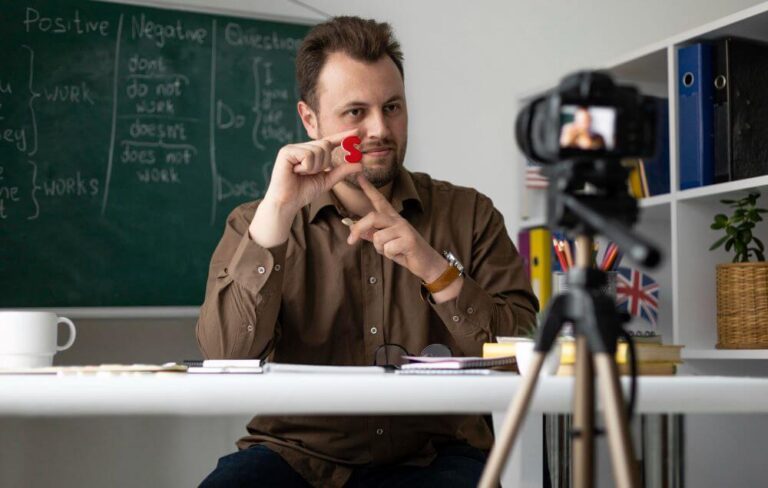Video editing is both an art and a science. It combines creative vision with technical expertise. Whether you’re just starting or looking to refine your skills, there are proven strategies to help you create more engaging and professional content. Keep reading to bring your video editing game to a whole new level.
#1 — Master Your Tools
Understanding your video editing software is fundamental. Spend time learning the features of specialized programs. Online tutorials, forums, and workshops are excellent resources for expanding your knowledge, including how to edit MKV, trim your video, do color correction, etc. Familiarize yourself with shortcuts as they can significantly speed up your workflow. A deep understanding of your tools allows you to focus on storytelling and creativity rather than struggling with technical challenges.
#2 — Organize Your Workflow
A well-organized project saves time and reduces frustration. Create a clear folder structure for your video clips, audio files, and graphics. Label each file descriptively and maintain consistency in your naming conventions. For example, instead of naming a file “clip1.mov,” label it “Intro_Scene_01.mov.” This practice ensures you can quickly locate the assets you need during the editing process.
#3 — Focus on Storytelling
Every great video tells a story, and as an editor, you are its architect. Begin with a clear goal: What is the video’s purpose, and who is the target audience? Structure your content with a beginning, middle, and end. Incorporate visual variety through cutaways, establishing shots, and B-roll footage — secondary clips that complement the main footage. These should add context, smooth transitions, or showcase actions. Here are some tips for effective use of B-Roll:
- Plan ahead — When scripting your video, consider where B-Roll will be most effective. This foresight can help you capture relevant footage during filming.
- Keep it relevant — Ensure that B-Roll footage directly relates to what is being discussed in the A-Roll to maintain coherence.
- Focus on quality — High-quality B-Roll can elevate your video’s production value. Use good lighting and stable shots to ensure professional-looking results.
- Experiment with techniques — Utilize different filming techniques like slow motion, time-lapse, and unique angles to make your B-Roll visually appealing.
By incorporating B-Roll effectively, you can enhance your video projects, making them more dynamic and engaging for your audience.
#4 — Enhance Visual Appeal with Color and Effects
Color grading and correction are powerful tools for setting the mood and creating visual cohesion. Learn basic techniques to adjust contrast, balance colors, and enhance the overall look of your footage. While effects can make a video stand out, use them sparingly. Overloading your project with transitions or flashy effects can make it feel amateurish. Stick to simple, purposeful enhancements that align with your video’s tone and message.
#5 — Pay Attention to Audio Quality
Audio often takes a backseat to visuals but is equally important in creating a polished video. Ensure that dialogue is clear and balanced with background music. Avoid overwhelming your audience with sound effects or loud tracks. Use dedicated tools in a video editor to eliminate background noise and align audio with visual elements seamlessly. Proper audio synchronization can make or break the viewer’s experience.
#6 — Keep Your Edits Tight
Clean, concise edits maintain the flow of your video. Trim unnecessary pauses, filler words, or redundant footage. A tight edit ensures that every second of your video serves a purpose. If you find a scene dragging, ask yourself: “Does this add value to the story?” If not, cut it. Keeping the pacing dynamic will hold your audience’s attention from start to finish.
#7 — Experiment and Seek Feedback
Don’t be afraid to try new techniques or styles in your projects. Experimenting with different editing approaches helps you discover what works best for your content. Once you’ve completed a project, share it with peers or mentors for constructive feedback. Fresh perspectives can reveal areas for improvement and inspire creative solutions you might not have considered.
#8 — Practice Makes Perfect
The best way to improve your editing skills is through regular practice. Work on a variety of projects to challenge yourself, whether it’s short films, tutorials, or personal vlogs. Consider participating in online challenges or collaborating with others to gain exposure to different editing styles and perspectives. Each project, no matter how small, is an opportunity to learn and grow.
Final Say!
Improving your video editing skills requires dedication, creativity, and a willingness to learn. By mastering your tools, organizing your workflow, focusing on storytelling, and paying attention to both visual and audio details, you can create content that captivates and engages. Remember, great editing is about more than technical skills — it’s about telling stories that resonate with your audience. Keep practicing, stay curious, and never stop refining your craft.

